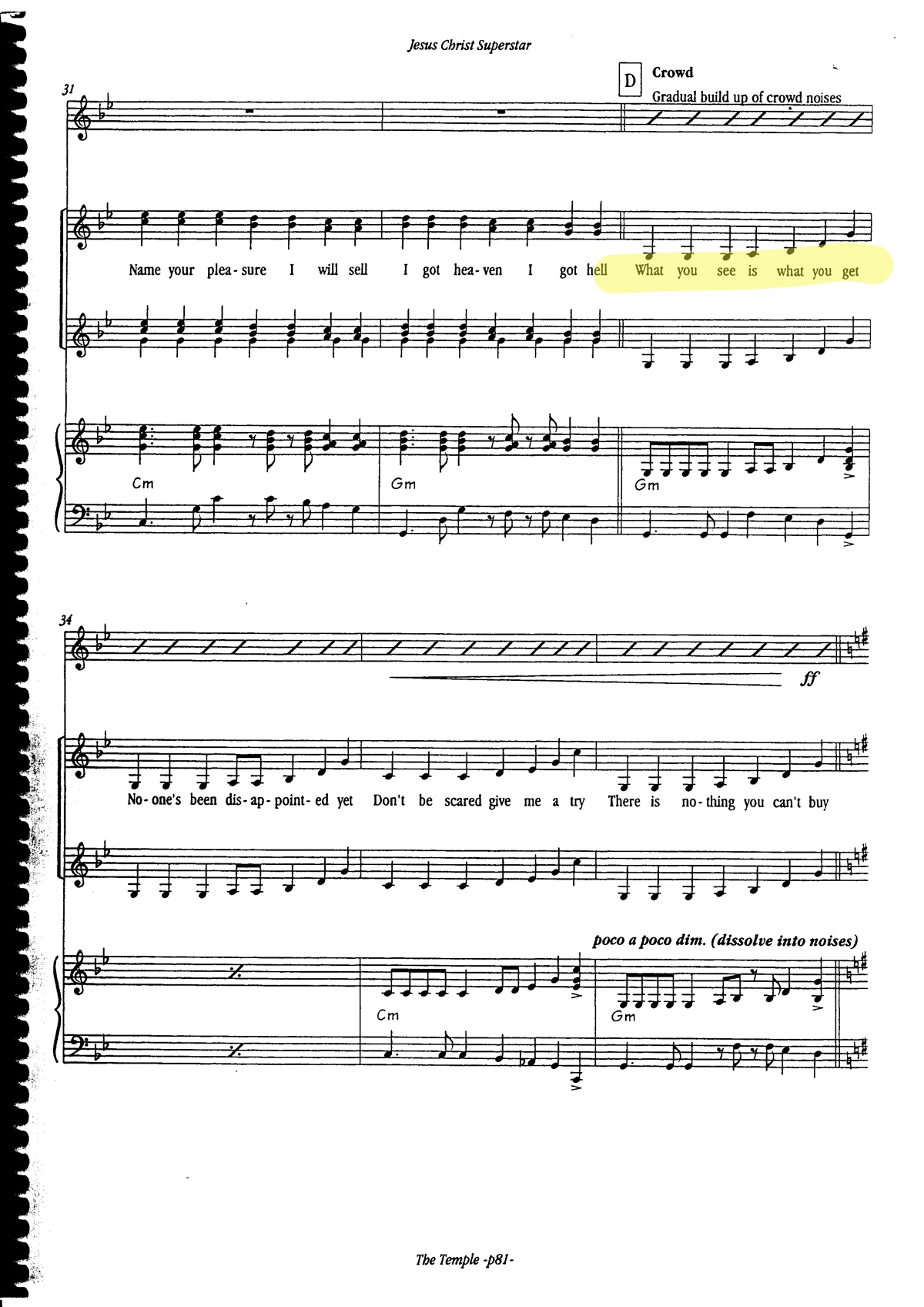WYSIWYG is the abbreviation for What-You-See-Is-What-You-Get. It is a concept developed at Xerox PARC; it means that the display on screen corresponds to the printed sheet of paper – a quite radical idea in the early days of desktop computing. According to Wikipedia the expression was “coined by John Seybold and popularized at Xerox PARC during the late 1970s.” – According to Alan Kay it was Charles Simony, who introduced the term.
Therefore it is quite stunning to hear the words in a totally different context. Tim Rice used the very same phrase for a chorus in Jesus Christ Superstar (music Andrew Lloyd Webber, 1970) in the piece The Temple.

Score of Jesus Christ Superstar, The Temple
Quite possible that John Seybold knew the song.
[Update 26-Apr-2017] I do not what to push this over the edge, but the following lines are kind of intriguing as well, once you switch the context back to computing:
No-one’s been disappointed yet – success rate, ease of use
Don’t be scared give me a try – familiarity, robustness, undo, user experience
There is no-thing you can’t buy – Business goals; revenue comes from happy customers
[Update 29-Dec-2018] Alan Kay: What exactly is WYSIWYG?